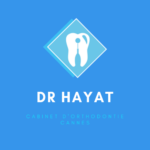No, that’s unlikely! Although growth helps in the correction of many types of problems, orthodontic intervention is also necessary to correct most dental malocclusions. Although growth helps the orthodontist to treat skeletal imbalances (jaw shifts), growth alone will not correct the problem. The use of orthodontic appliances during treatment allows the growth potential to be…
No, that’s unlikely! For most people, once the first permanent molars are removed (around the age of 6-7 years), the space available for anterior teeth will not increase, even with growth. In fact, this space will decrease over the years, making the situation worse. Studies have shown that virtually all dental and occlusal problems tend…
Most malocclusions are mainly hereditary or genetic in origin. This explains why similar problems are often encountered among members of the same family. Examples of problems of genetic origin are lack or excess space between teeth, excess or missing teeth and imbalances between the shape and size of the jaws. Other factors that can contribute…
The term “occlusion” refers to the relationship of teeth to each other when the jaws are closed. If this relationship is normal, it is called a “normal occlusion” or ideal. Any deviation from this “ideal” relationship constitutes a “malocclusion” and refers to a bad relationship between teeth and/or jaws. For a bite to be functional…
No, that’s not necessary. Although many of our patients are referred to us by their family dentist, many people decide to visit afin on their own initiative to have their occlusion assessed and to learn about the benefits that orthodontics can bring them.
The French (ADF) and American (AAO) associations of orthodontists recommend that a first evaluation of growing young people should take place around the age of 7. At this age, several problems can be detected and some prevention can be planned to prevent certain problems or reduce their severity.
The purpose of this first visit is first to inform you and assess your dental condition or that of your child. This will allow us to make recommendations to prevent problems from occurring, intercept problems that are developing or correct other conditions that are already present. We will try to answer all your questions and…
Although the majority of orthodontic patients are children or adolescents, we regularly and successfully treat patients between the ages of 40 and 70. The oldest patient we ever treated was 81 years old ! The basic biological process by which teeth move is the same for all individuals, regardless of age. In adults, in the…
Virtually all individuals with occlusion problems (“twisted” or misaligned teeth) can have orthodontics. If the teeth and supporting tissues (bone and gum) are healthy, there is usually no contraindication to orthodontic corrections.
Although the main motivation for patients when considering orthodontic treatment is often to improve aesthetics, the benefits they will get from it goes far beyond a beautiful smile and straight teeth. By properly aligning teeth, lips and jaws, orthodontics can help improve self-esteem and facial aesthetics. Properly aligned teeth are easier to clean and maintain,…

